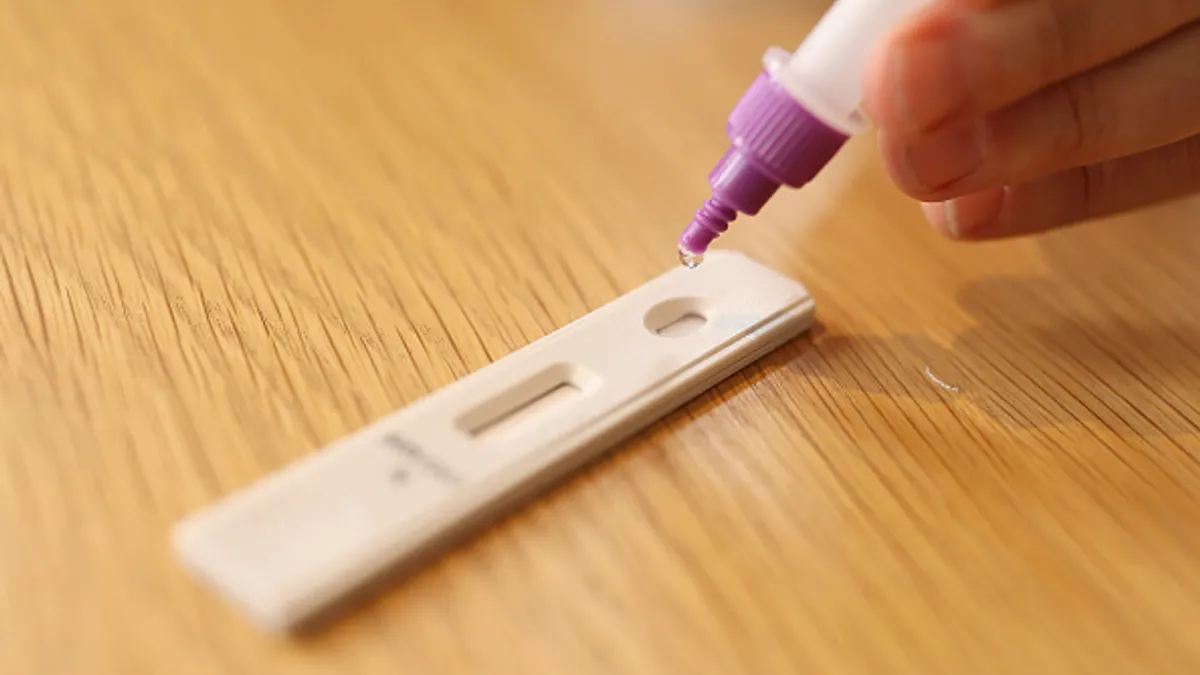Dive Brief:
- The Food and Drug Administration repeatedly changed its emergency use authorization (EUA) policies to address the need for COVID-19 testing, allowing problematic tests to be distributed, according to a report released Wednesday by the Department of Health and Human Services’ Office of Inspector General.
- The watchdog found that the FDA made “calculated decisions” to increase test availability, which sometimes came at the expense of accuracy or sufficient validating data.
- The FDA agreed with all the OIG’s recommendations, including expanding the Center for Devices and Radiological Health's existing device-tracking platform to facilitate FDA submissions, building formal communication channels with the lab community, and creating a national testing strategy that goes beyond the EUA process.
Dive Insight:
The OIG focused its review on the early months of the pandemic, between January and May 2020, looking first at the FDA’s authorization of a test developed by the Centers for Disease Control and Prevention. No alternative to the CDC’s test existed when public health labs flagged problems with the test.
The FDA allowed modifications to the CDC’s existing EUA to address some of the problems, such as allowing commercial vendors to manufacture the CDC’s test. The CDC also dropped a component of the test that was failing for most public health labs.
“Overall, to address the problems with the CDC test rollout, FDA used its EUA authority to an extent that it had not in previous emergency responses,” the report noted.
“Balancing the need for test availability with test performance amidst an unprecedented pandemic was difficult for FDA to navigate. No roadmap existed to achieve that balance, so FDA made calculated decisions that prioritized testing availability,” the OIG stated in its report. “This meant that poorly performing tests reached the market, although how many were ultimately used or the impact on public health remains unknown.”
Some of the flexibilities also spilled over into commercial tests. For instance, when developers were struggling to find clinical samples to validate tests, the FDA allowed them to use contrived samples, made by “spiking” human specimens with COVID-19 material, but less accurate. The agency also allowed them to use a smaller set of patient samples.
In late February and early March of 2020, the FDA also rolled out “notification policies,” to let developers begin distributing their tests even before they had obtained an EUA, as long as they notified the FDA and validated the tests first. By May 2020, 245 labs had said they would test under this policy.
This had the intended effect of making tests available faster, but many tests on the market had performance problems. For instance, of 125 EUA requests for lab-developed tests, 82 had design or validation problems, the FDA found in a later analysis.
“Weeks or months may have passed before FDA reviewed the EUA request and required a developer to correct performance problems,” the report said.
A similar notification policy for serology tests resulted by the end of April in more than 150 of those tests being available on the market without an EUA. Some of those tests did not perform as expected, and others falsely claimed to diagnose COVID-19 or have FDA approval, leading to more scrutiny by the agency.
The report also found that many of the companies were inexperienced. Based on the OIG’s survey of 237 test developers that engaged with the agency, most had not gone through any previous FDA approval or clearance process.
The watchdog added that the agency has an opportunity to use this experience to better plan for and respond to future public health emergencies.











